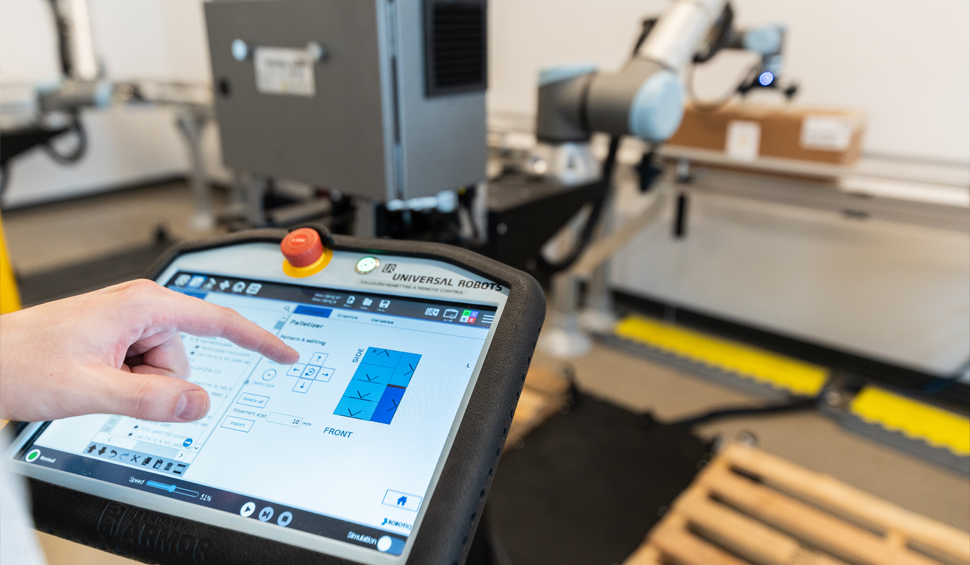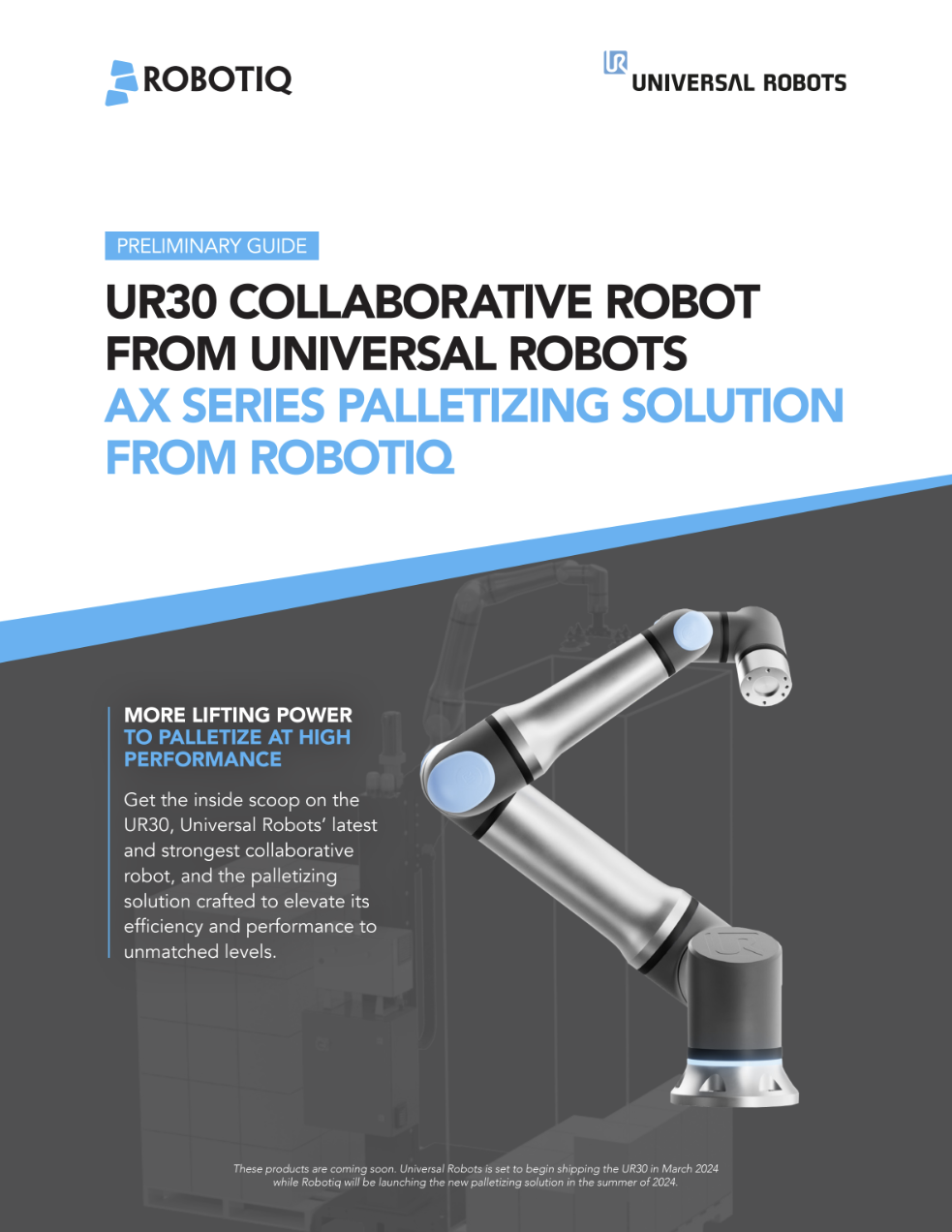Should You Choose Decentralized Palletizing?

Posted on May 28, 2021 11:06 AM. 5 min read time
You have decided to go with robotic palletizing. You know that it'll help you to improve the throughput of your entire operation. You have researched the various options and you now understand more about the advantages and disadvantages of each one.
But, there's one decision that you're still not sure about…
Should you go with decentralized palletizing?
Decentralized palletizing is an approach that involves having a different robot cell at the end of each of your production lines. It is a contrast to centralized palletizing where all of your lines go into the same palletizing cell.
There are various advantages to decentralized palletizing including higher flexibility, clearer responsibility over product lines, and reduced downtime.
However, you might still be uncertain about choosing decentralized palletizing.
Centralized palletizing has long been the predominant approach. There must be a good reason, right?
If you go with decentralized palletizing, how can you be sure that it won't end up as a huge mistake?
Common concerns about decentralized palletizing
It's true that decentralized palletizing tends to be less common.
People are sometimes apprehensive aboutthe impact that decentralized palletizing will have on their business.
One common concern is cost. People worry about the higher costs that they will incur by following a decentralized palletizing approach. Instead of investing in only one palletizing robot for your entire facility — as would be required with centralized palletizing — you have to pay for multiple palletizing robots. This can lead people to shy away from decentralized palletizing.
Another common concern is the amount of work required to deploy and maintain the robots. People imagine themselves spending a lot of their time programming the robots and keeping them running. They assume that a single, centralized robot will be less work than several robots.
Yet another common concern is the amount of floor space required to fit all of the different robots. People envision the large palletizing robots that you often see on YouTube videos and imagine the huge space that would be taken up having several of these throughout their facility.
These concerns are understandable. However, they are based on false assumptions.
Why cobot palletizing solutions are different
There is a new development in robotic palletizing that makes people's common concerns less important than they were previously.
Collaborative robots are now suitable for palletizing. This opens up decentralized palletizing to many more situations than were possible in the past, when the only real option for robotic palletizing was to use huge palletizing robots.
Cobots are different from conventional palletizing robots in several ways. They are more cost-effective and require fewer extras to operate. They are also smaller, easier to deploy, and require much less maintenance (or no maintenance in some cases).

With cobot palletizing solutions — like the Robotiq Palletizing Solution — the robot doesn't place restrictions on your ability to use decentralized palletizing.
It's now much more feasible to add a single palletizing robot to the end of each of your product lines.
The real question you need to ask yourself is…
Is decentralized palletizing the right choice for me?
A 7 step process to decide if decentralized palletizing is for you
Just because decentralized robotic palletizing is now easier than ever before, it doesn't mean you should necessarily go for it. There is a process for assessing any technological solution.
Take a little time to think through your unique requirements to determine if it really is the best option for you.
Here are 7 steps you can use to think through the decision:
- List what you need in a palletizing solution — Making a list is a reliable way to get a fresh perspective on any tough decision. In this case, you want to list all of your most important requirements in a palletizing solution. At this stage, avoid making assumptions about the solution you will choose in the end.
- Look into the future — The biggest benefits of decentralized palletizing will show up over months and years, not days or weeks. Think about the relative impact of centralized vs decentralized palletizing in the long term. How will a decentralized approach change your business in the future?
- Identify robotic solutions — At this point, it's worth looking at the possible solutions available on the market. If you are considering using collaborative robots, be aware that a pre-designed palletizing solution will make the process much smoother than if you decide to integrate the robot cell yourself from scratch.
- Calculate the return on investment — Make sure to consider the initial, ongoing, and maintenance costs for any of your chosen solutions when you calculate the return on investment. The lower ongoing cost of collaborative robots is an area where they can outshine conventional palletizing robots in the long run.
- Plan your robot cell — Having decided on your chosen palletizing robot, start the process of designing your robot cell. If you are going with a pre-designed solution, this will largely involve designing how it will fit in with the other parts of your process.
- Look for copy-paste solutions — Decentralized palletizing requires that you have two or more palletizing robots in your facility. You can seriously reduce the deployment time by going for a copy-paste solution. When your first deployment is complete, use exactly the same hardware in your other cells and copy the programming.
- Deploy once, learn and grow — All robot deployments are a process of learning. The path to success is to start small and then use your new learnings to build on your success in your second, third, and subsequent robot cells.
Choose your decentralized palletizing robot today
The key with decentralized palletizing is to make your life as easy as possible by choosing a robotic solution that allows for easy copy-paste deployments.
By replicating your successful palletizing cells, rather than starting from scratch each time, your robots will start earning a return on investment quicker.
If you're looking for an easy-to-deploy palletizing cell, you might want to check out the Robotiq Palletizing Solution.
What concerns do you have about decentralized palletizing? Tell us in the comments below or join the discussion on LinkedIn, Twitter, Facebook, or the DoF professional robotics community.





Leave a comment